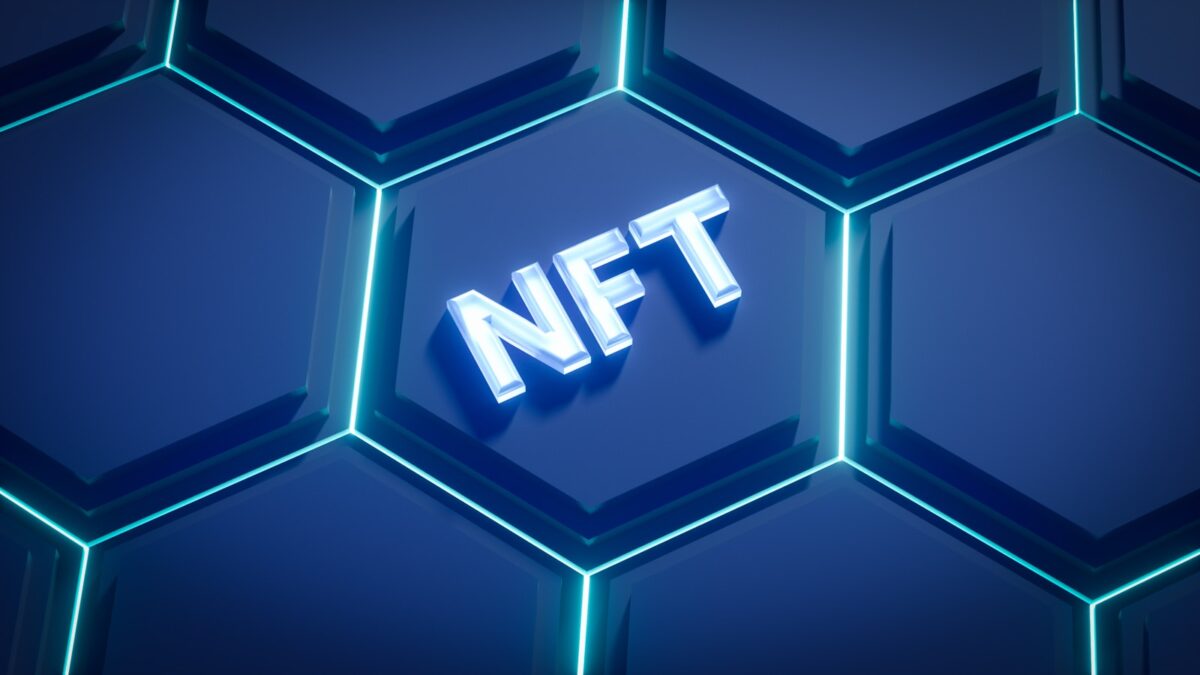
Cryptocurrency whitepapers guide

Thorough due diligence begins with analyzing the core documentation that outlines a project’s goals and mechanisms. Detailed technical documents serve as the foundation for understanding the architecture, consensus algorithms, tokenomics, and security measures proposed by developers. Scrutinizing these specifications allows investors and analysts to evaluate feasibility and innovation beyond marketing claims.
Performing systematic examination of foundational papers demands attention to protocol design choices and implementation details. Identifying assumptions, cryptographic techniques, scalability solutions, and governance models within these texts reveals potential strengths and weaknesses. This methodical approach fosters objective evaluation rather than relying on hype or superficial summaries.
Effective assessment requires cross-referencing claims with existing research and industry standards. By combining document analysis with external validation–such as code audits or community feedback–one gains a comprehensive perspective necessary for informed investment decisions. Understanding the underlying technology through precise specification review transforms abstract concepts into measurable criteria for success.
Understanding Project Documentation: A Technical Analysis
Evaluating any blockchain initiative requires meticulous examination of its foundational documentation. These documents serve as the primary source of technical specification, outlining the architecture, consensus mechanisms, tokenomics, and intended use cases. Investors and analysts should prioritize projects that present clear, comprehensive, and verifiable research data within their whitepapers to ensure informed decision-making and reduce exposure to speculative risks.
Effective scrutiny involves verifying that the project’s protocol details align with current cryptographic standards and established blockchain principles. For instance, a thorough analysis might include assessing consensus algorithms like Proof of Stake or Delegated Byzantine Fault Tolerance described in the documentation, comparing them with existing implementations for scalability and security metrics. Such diligence establishes confidence in the project’s feasibility beyond marketing claims.
Core Elements of Technical Specification in Blockchain Proposals
The documentation typically includes sections such as system architecture diagrams, smart contract logic outlines, economic incentives models, and governance frameworks. Each component demands rigorous validation through cross-referencing source code repositories or testnet deployments where applicable. For example:
- Consensus Mechanisms: Detailed explanation of how nodes reach agreement on ledger state changes;
- Token Distribution: Clear breakdown of initial allocation percentages among founders, investors, and community incentives;
- Security Measures: Description of cryptographic primitives used to secure transactions;
- Scalability Solutions: Proposed layer-two protocols or sharding techniques aimed at throughput enhancement.
This level of granularity enables researchers to simulate potential bottlenecks or attack vectors before committing capital.
Investment decisions benefit from comparative studies involving multiple projects’ technical dossiers. Utilizing analytical frameworks such as SWOT (Strengths, Weaknesses, Opportunities, Threats) tailored to blockchain specifics can reveal hidden vulnerabilities or unique competitive advantages embedded in the proposal’s design choices. Additionally, referencing peer-reviewed academic research that supports the adopted technologies strengthens credibility assessments.
Diligence extends beyond reading; it encompasses monitoring project development milestones against declared roadmaps documented initially. Deviations may indicate technical challenges or shifts in strategic focus requiring reassessment of investment viability. Transparent communication channels maintained by development teams further corroborate authenticity and ongoing commitment to stated goals.
How to Read Technical Documentation for Blockchain Projects
Begin your examination by focusing on the specification section of the documentation. This area outlines the core protocol rules, consensus mechanisms, and network architecture that define the project’s technical foundation. Conducting rigorous due diligence here ensures a clear understanding of how the system operates under various conditions and highlights potential scalability or security challenges.
Next, perform a detailed analysis of the economic model presented within the document. Assess token distribution methods, incentive structures, and governance frameworks with an eye toward long-term sustainability. Research comparable projects to identify whether these mechanisms align with industry standards or present innovative solutions backed by sound theory and empirical data.
Stepwise Approach to Evaluating Project Documentation
- Technical Architecture: Examine cryptographic primitives, consensus algorithms (e.g., PoW, PoS), and network topology specifications. Verify claims against peer-reviewed sources or existing implementations.
- Security Considerations: Identify threat models described in the paper and evaluate mitigation strategies such as formal verification, bug bounty programs, or third-party audits.
- Ecosystem Integration: Analyze interoperability protocols, API accessibility, and compatibility with existing infrastructure to gauge practical deployment feasibility.
- Development Roadmap: Review milestones and versioning plans for realism and coherence with stated goals.
The methodology used in research sections can reveal the rigor behind experimental results and benchmarks. Scrutinize testnet performance data, simulation environments, or real-world pilot studies included in appendices or supplementary materials. Such empirical evidence reinforces confidence in technical claims beyond theoretical assertions.
A comparative study of multiple projects’ documentation may expose recurring weaknesses or highlight pioneering approaches. For example, examining Ethereum’s transition from Proof of Work to Proof of Stake through its specification updates demonstrates evolutionary improvements grounded in extensive testing and community feedback. Engaging actively with these documents cultivates analytical skills essential for evaluating emerging blockchain technologies critically.
Key Sections Breakdown
Begin with the technical specification, as it forms the backbone of any project documentation. This section details consensus algorithms, cryptographic protocols, network architecture, and tokenomics mechanisms. For example, Ethereum’s foundational papers meticulously describe the transition from Proof of Work to Proof of Stake, providing critical data on security assumptions and scalability metrics. A thorough analysis here enables stakeholders to assess feasibility and innovation rigorously.
The research and analysis portion presents empirical evidence supporting design choices and potential vulnerabilities. Case studies like Zcash’s zero-knowledge proofs illustrate how advanced cryptography is integrated into practical systems. Diligence in examining referenced academic sources and experimental results ensures that claims are not merely theoretical but have undergone peer validation or real-world testing.
Core Components of Project Documentation
Due diligence mandates close scrutiny of the problem statement, use cases, and roadmap sections within project literature. These outline objectives, target audiences, and development milestones with timelines. The clarity and realism of these elements impact investor confidence significantly; overly ambitious or vague plans often signal risks or underdeveloped concepts.
A dedicated segment on governance models and economic incentives reveals how participant behavior is aligned with network health. Detailed token distribution schedules, staking rewards, penalties, and upgrade mechanisms should be transparently documented. Such specification allows for informed risk assessment concerning centralization threats or inflationary pressures–factors critical to long-term sustainability.
Identifying Project Goals
Effective evaluation of any blockchain initiative begins with a thorough assessment of the project’s stated objectives. Clear and measurable goals are a fundamental part of the technical documentation, providing an essential specification that guides both development and investor expectations. Investors must apply rigorous due diligence by cross-referencing these aims with the underlying technology and protocol architecture described in the official documents.
Research into project objectives should prioritize specificity over general claims. A well-articulated purpose includes quantifiable targets such as transaction throughput, consensus mechanism improvements, interoperability standards, or user adoption metrics. These elements serve not only as benchmarks for progress but also as indicators of technical feasibility within the scope defined by the team’s whitepaper equivalents.
Technical Clarity and Strategic Alignment
One critical aspect during analysis involves verifying whether the project’s goals align with its proposed technological solutions. For example, a platform aiming to enhance scalability through sharding must detail how this method integrates with existing blockchain frameworks, supported by empirical data or simulations. Without such clarity in documentation, investment decisions risk being based on ambiguous promises rather than substantiated advancements.
Diligence requires comparing multiple sources including code repositories, testnets, and third-party audits alongside the primary specification document. When assessing projects like Layer 2 scaling protocols or privacy-focused chains, investors benefit from examining detailed performance reports or benchmarking studies included in supplementary materials. This triangulation confirms that declared goals are not only aspirational but underpinned by demonstrable capability.
A practical methodology to identify authentic objectives involves dissecting each goal into constituent technical components and evaluating their interdependencies. For instance, if a decentralized finance (DeFi) protocol lists security enhancement as a core aim, one should investigate which cryptographic schemes or consensus algorithms it utilizes to achieve this target. Such granular research helps distinguish between innovation-driven projects and those relying on generic statements without substantive backing.
The integration of quantitative metrics within project documentation significantly strengthens goal validation processes. Metrics like average block time reduction percentages, latency benchmarks in network communication, or gas fee optimization figures offer concrete evidence supporting strategic claims. This scientific approach encourages investors to formulate hypothesis-driven inquiries about potential risks and benefits before committing resources.
Evaluating Technical Details
Thorough technical analysis of a project’s documentation is fundamental to assessing its viability and potential for investment. Research should focus on the clarity and completeness of the specification section, ensuring that protocols, consensus mechanisms, and cryptographic methods are described with sufficient precision. For example, an explicit explanation of consensus algorithms–such as Proof-of-Stake or Delegated Byzantine Fault Tolerance–allows verification of security assumptions and scalability claims.
Due diligence demands cross-referencing the stated architecture against known standards and existing implementations. Projects that provide detailed flowcharts, pseudocode, or reference implementations demonstrate higher transparency. In contrast, vague descriptions without concrete technical backing raise concerns about feasibility. A rigorous examination often involves comparing whitepaper assertions with real-world performance metrics published by testnets or early deployments.
Key Components for Technical Evaluation
A structured approach requires attention to several core components within project documentation:
- Consensus Mechanism: Analyze the algorithm’s resistance to common attacks such as 51% attacks or Sybil attacks.
- Tokenomics Specification: Review supply models and distribution rules coded into smart contracts or protocol logic.
- Security Protocols: Verify encryption standards and audit reports related to smart contract vulnerabilities.
- Scalability Solutions: Assess proposed Layer-2 technologies or sharding methodologies in terms of throughput improvements.
- Interoperability Features: Examine APIs or bridges enabling communication with other networks.
The depth of technical research also benefits from case studies where similar approaches have succeeded or failed. For instance, analyzing Ethereum’s shift from Proof-of-Work to Proof-of-Stake offers insight into transition challenges and energy efficiency improvements. Such comparative investigations assist in forecasting operational risks inherent in novel designs presented within project proposals.
Diligence extends beyond written specifications by including code audits from reputable firms and community feedback found on developer forums. Projects backed by open-source repositories enable independent verification and foster confidence in their development maturity. Investment decisions grounded in this multifaceted evaluation framework increase the likelihood of identifying sustainable innovations rather than speculative ventures.
Assessing Team Credibility: Final Insights
Due diligence in evaluating a project’s development team must prioritize thorough research into their technical expertise and track record, as reflected in available documentation and prior ventures. Investment decisions anchored solely on promotional materials without rigorous analysis of the team’s contributions to protocol design, code repositories, and peer-reviewed publications risk overlooking critical vulnerabilities or overestimating capabilities.
Systematic scrutiny of the project’s foundational documents reveals patterns of transparency and technical depth that correlate strongly with long-term viability. For instance, teams providing detailed cryptographic protocols, consensus mechanism explanations, and modular architecture diagrams demonstrate a level of rigor that often predicts resilient implementation and adaptive progress.
Key Takeaways for Evaluators
- Cross-verify credentials: Authenticate developers’ participation in recognized open-source projects or academic research relevant to blockchain technology to gauge genuine expertise.
- Analyze contribution history: Evaluate version control logs (e.g., GitHub commits) for consistency, code quality, and responsiveness to community feedback.
- Examine interdisciplinary skills: Identify presence of cryptographers, economists, and system architects whose combined knowledge strengthens protocol robustness.
- Assess communication transparency: Review project reports and technical updates for clarity and absence of ambiguous jargon that can mask deficiencies.
- Monitor independent audits: Confirm whether third-party security assessments have been conducted and how findings were addressed within the documentation.
The evolving complexity of decentralized systems necessitates dynamic frameworks for vetting teams beyond static profiles. Emerging analytical tools leveraging machine learning can quantify qualitative aspects such as sentiment in developer discourse or anomaly detection in deployment patterns. This progression suggests future methodologies will integrate automated diligence with human expert review to refine investment risk models substantially.
Cultivating an investigative mindset when assessing a project’s core contributors ultimately enhances the predictive accuracy regarding its technological sustainability. Encouraging continuous engagement with evolving documentation standards allows stakeholders to anticipate potential failure points before they manifest operationally. The pathway from hypothesis about team credibility to validated confidence lies through iterative examination of both qualitative narratives and quantitative metrics embedded within project deliverables.


